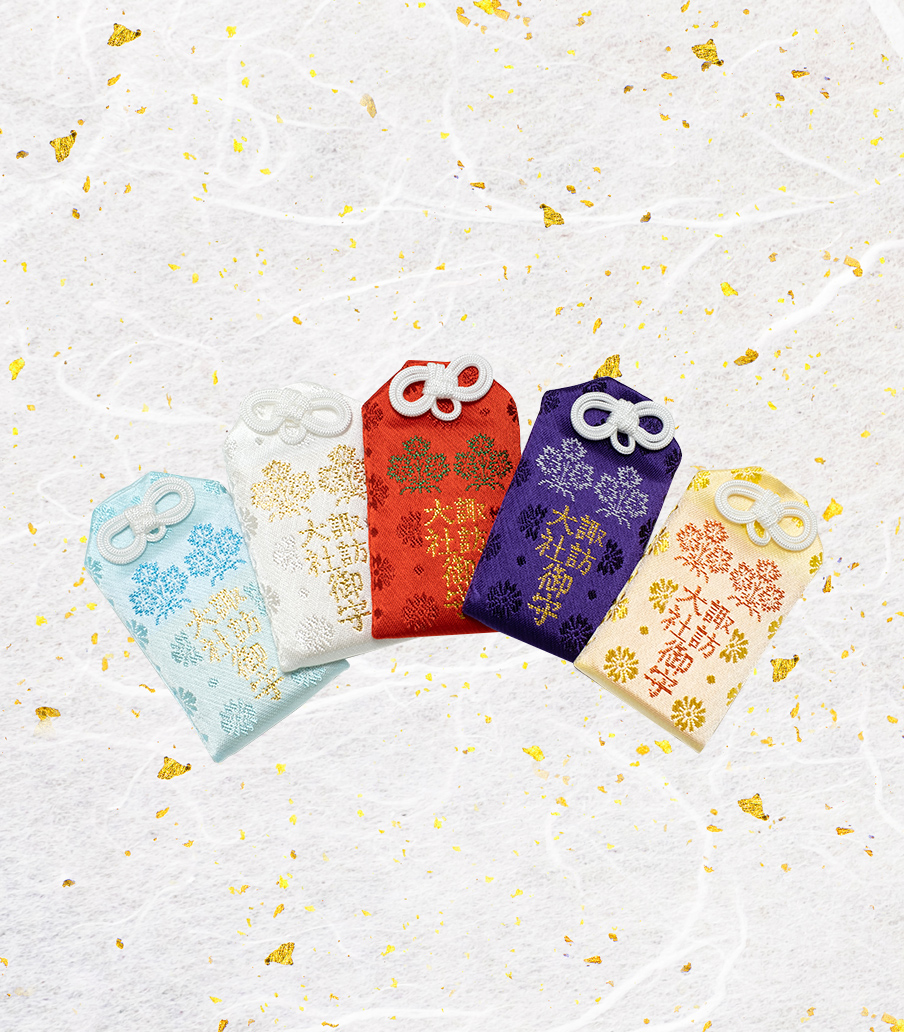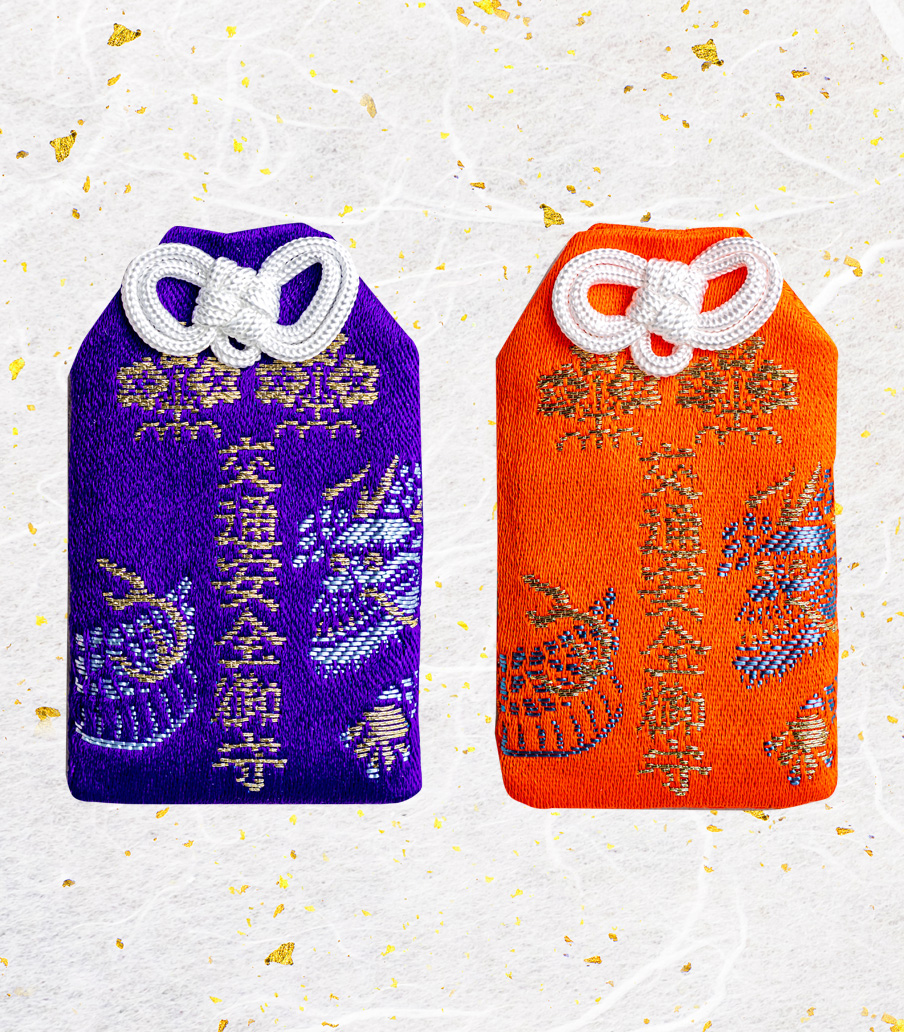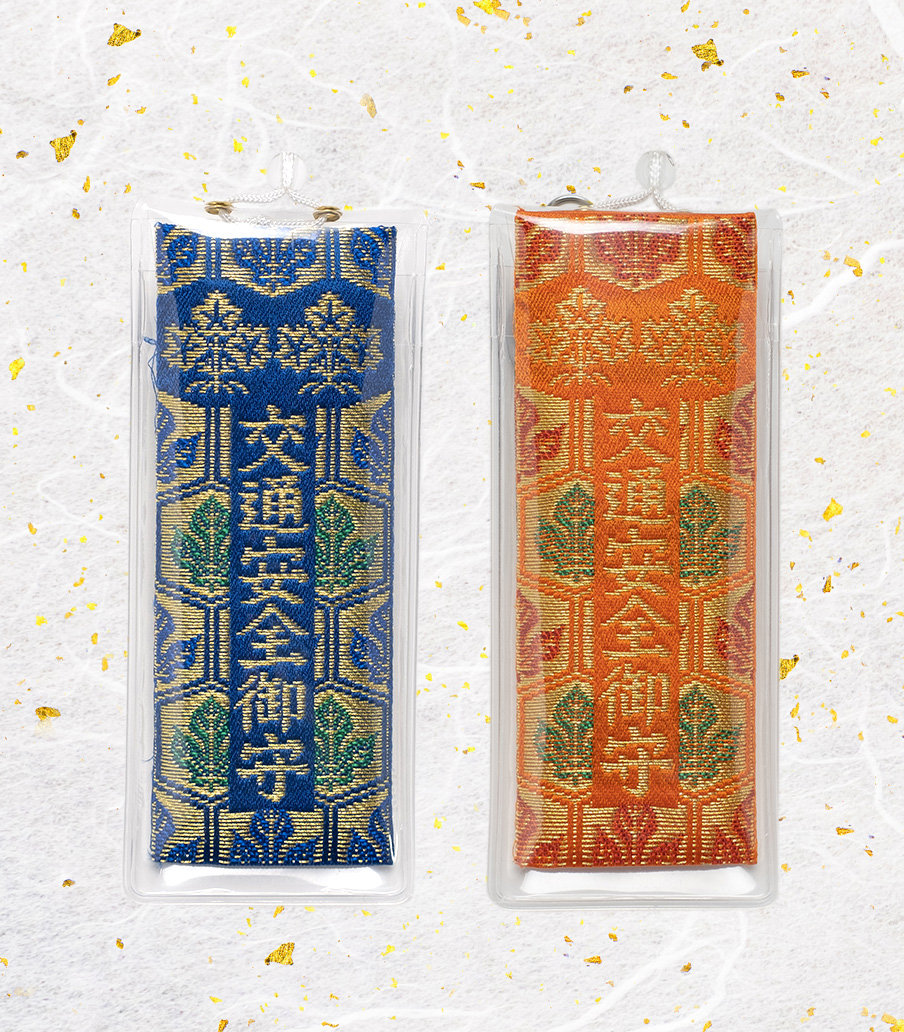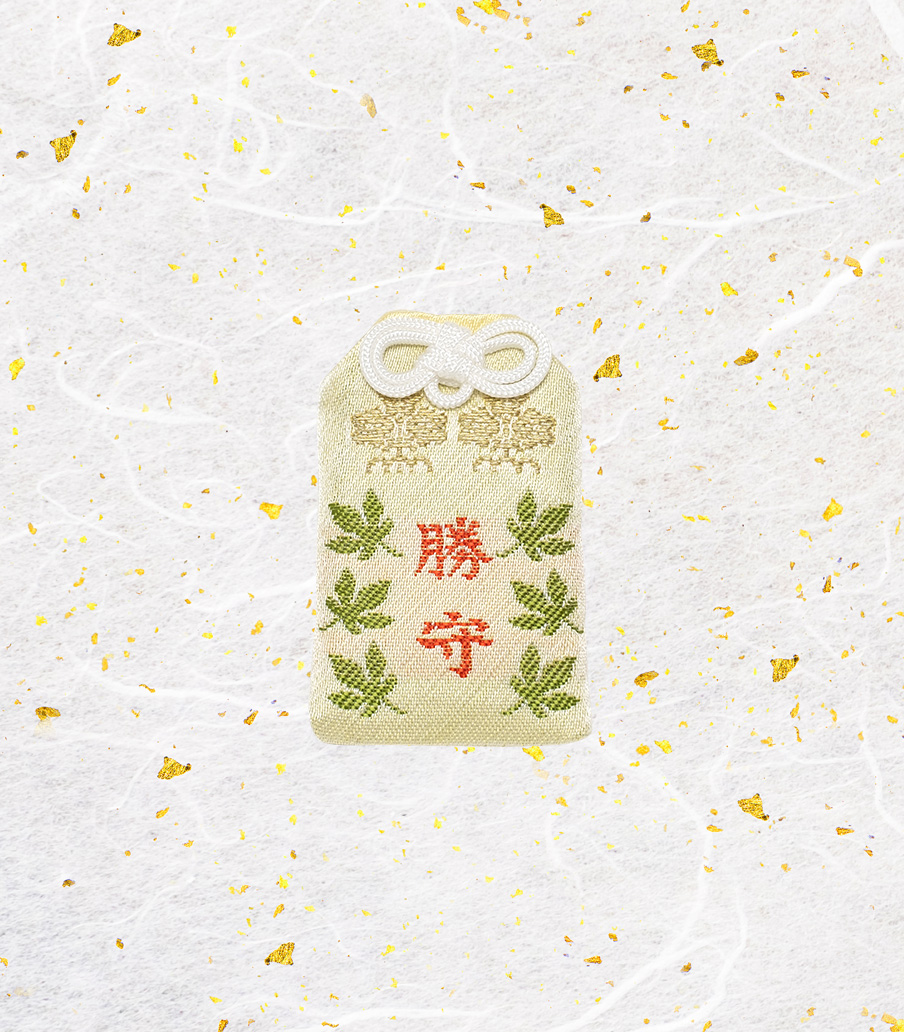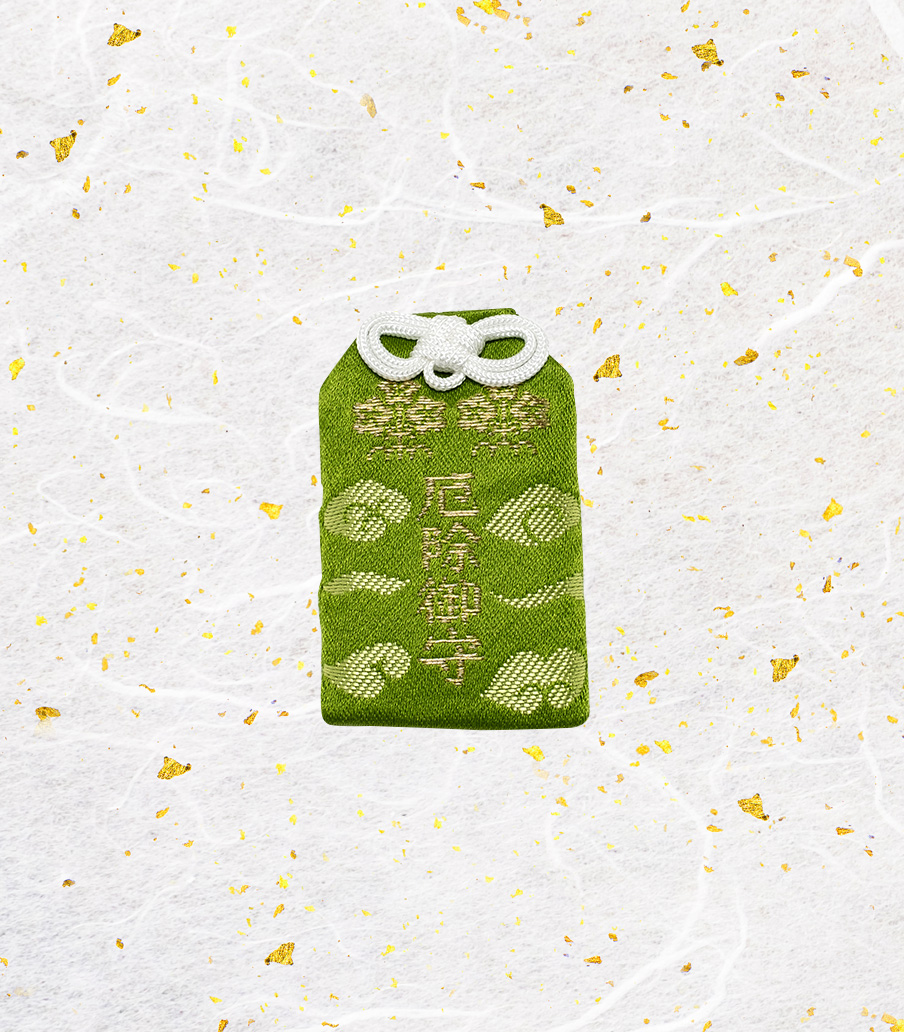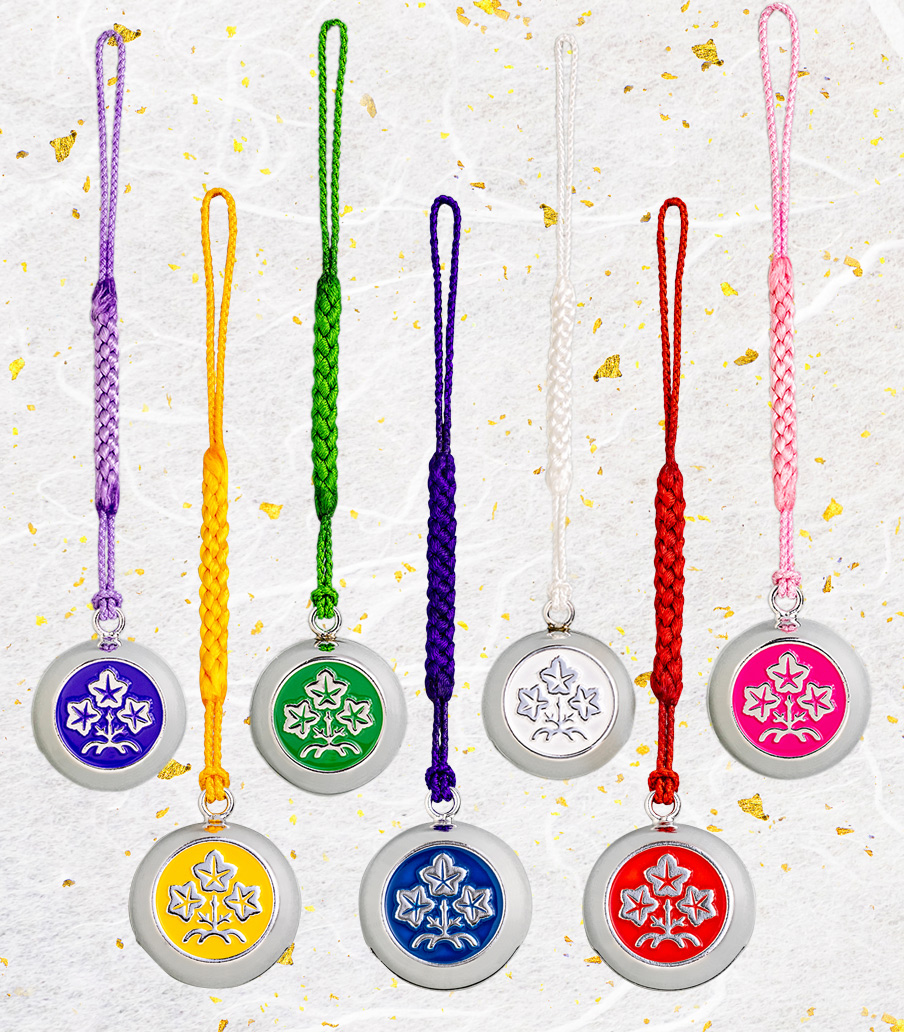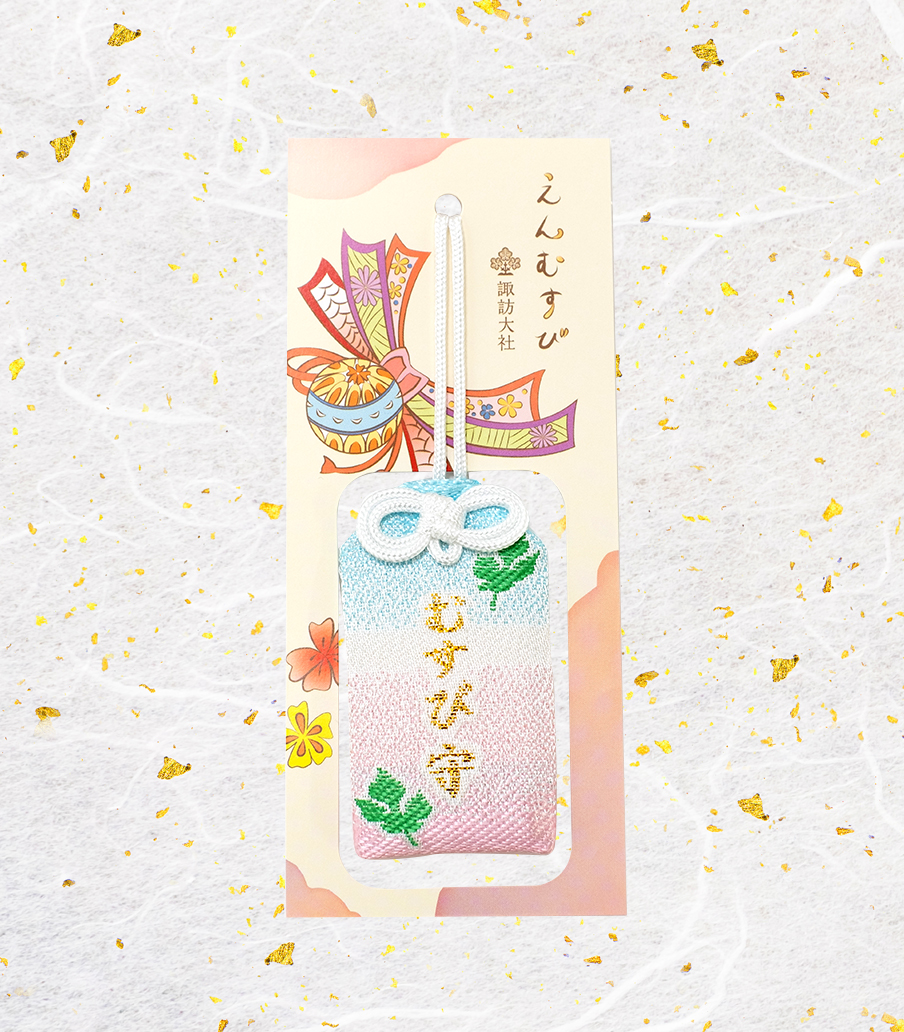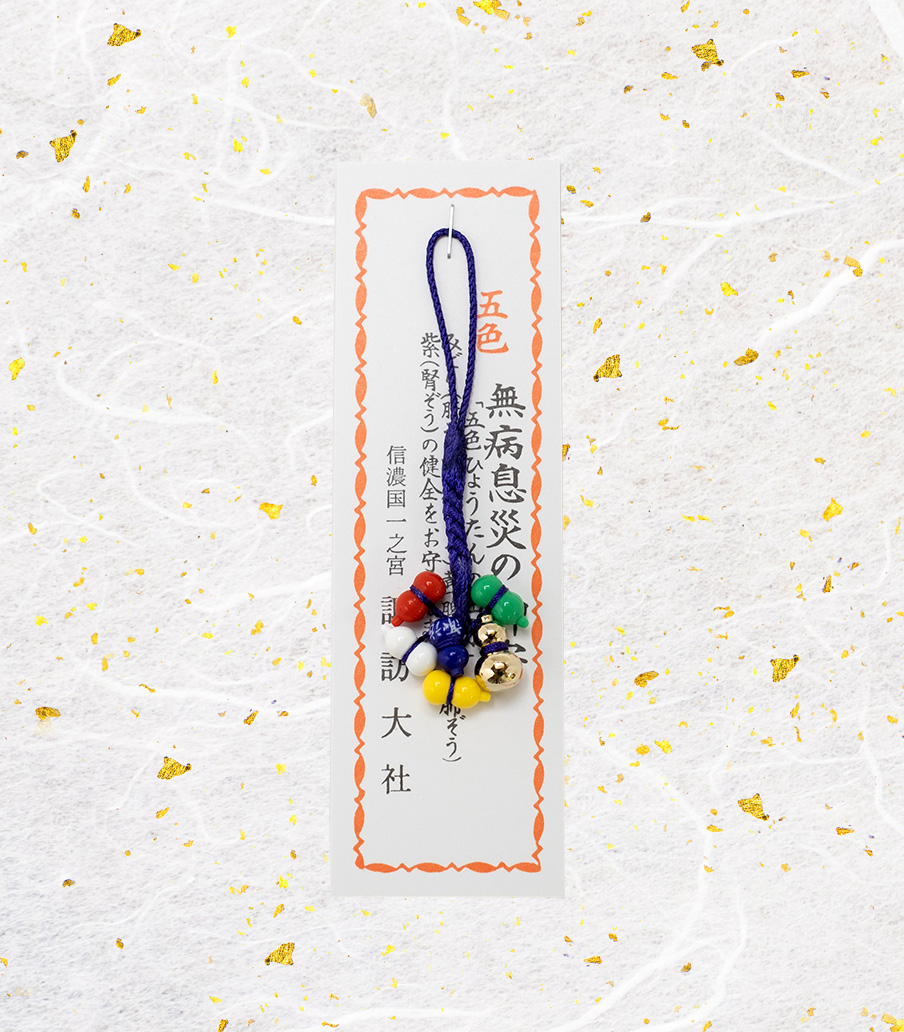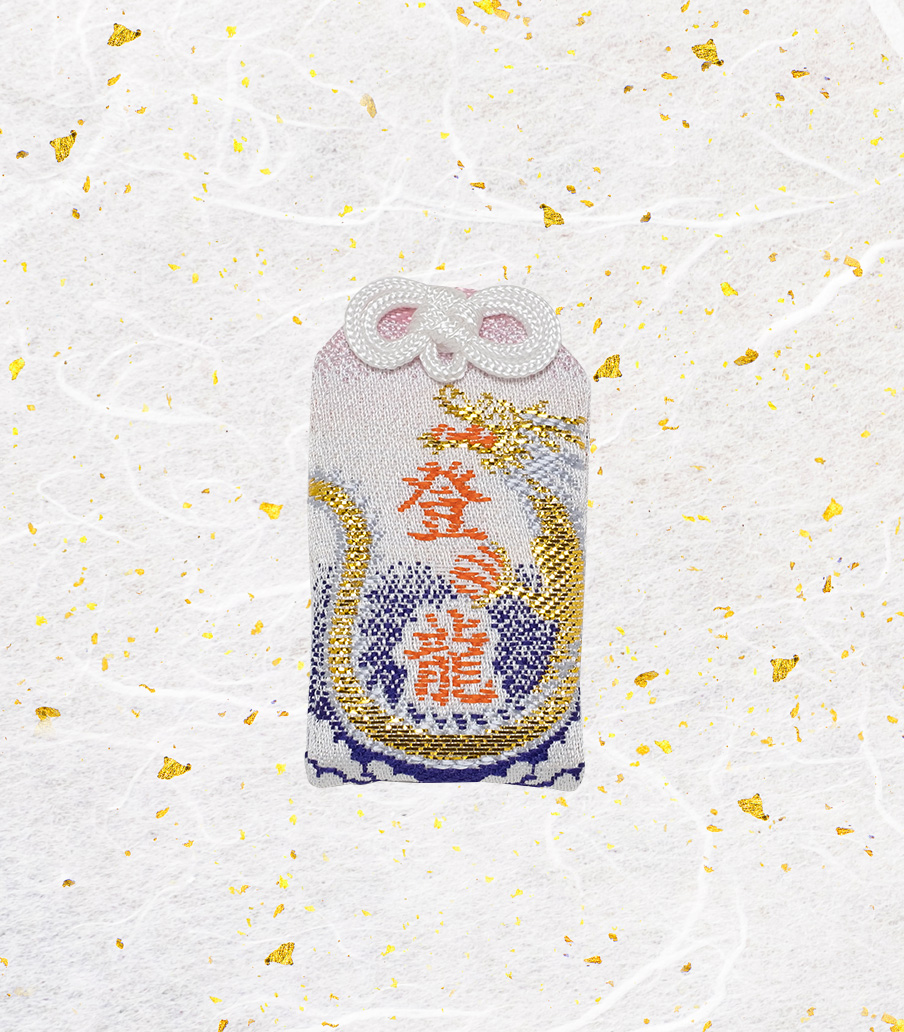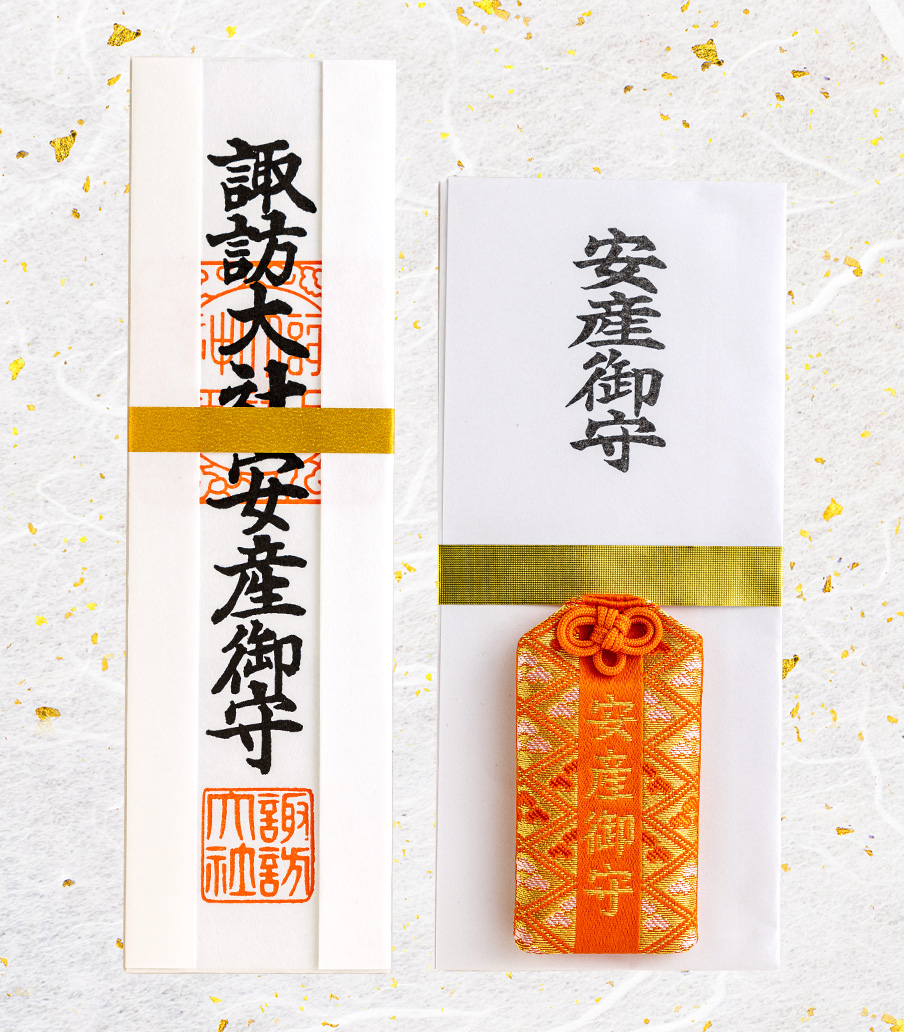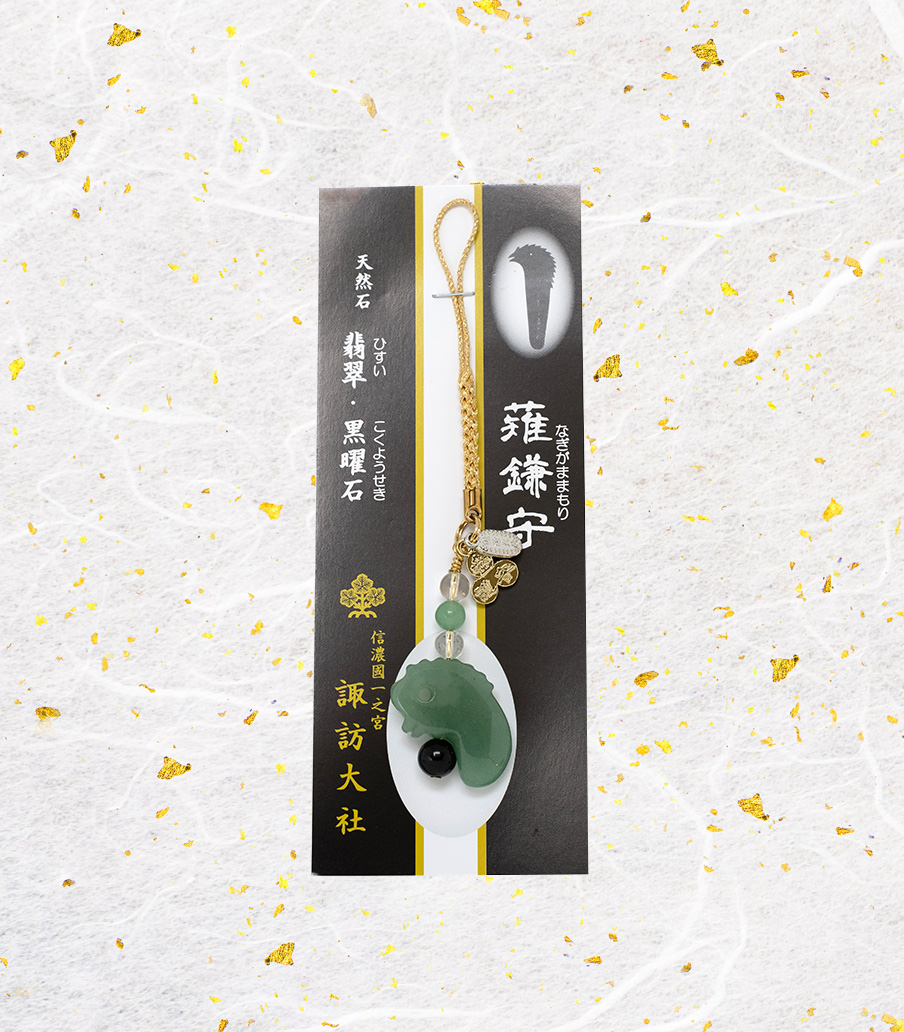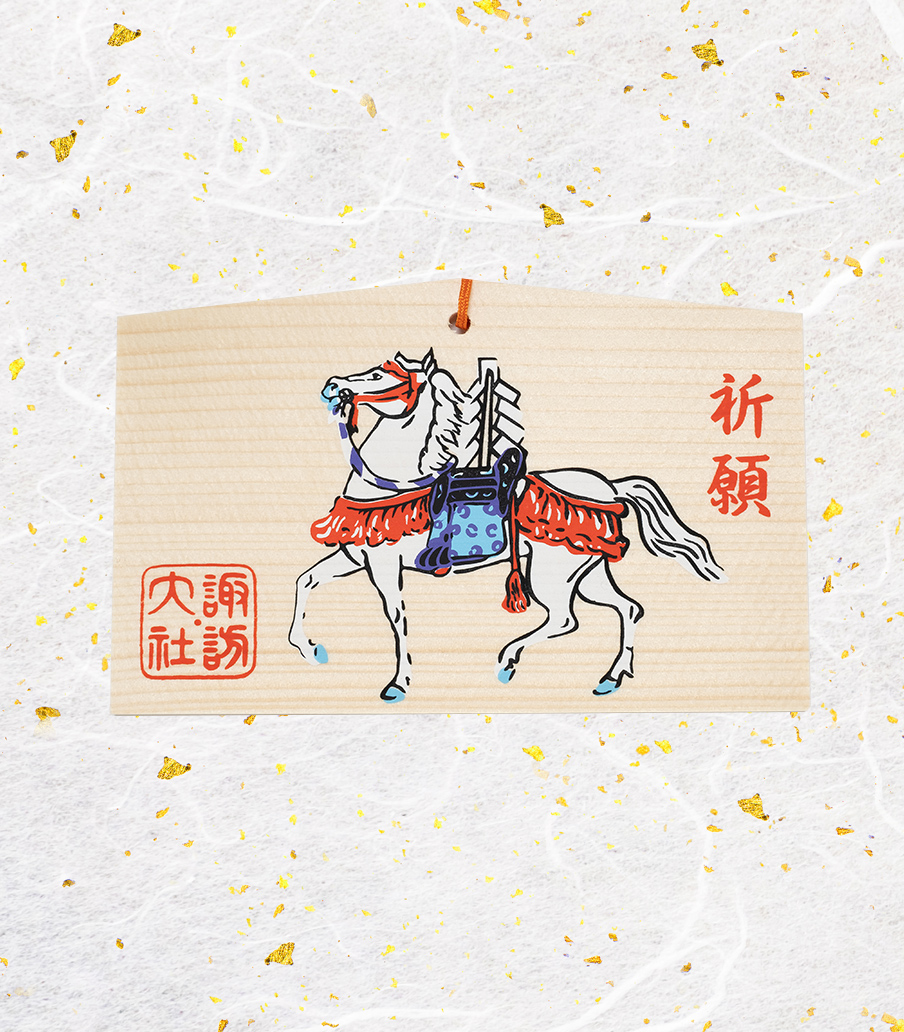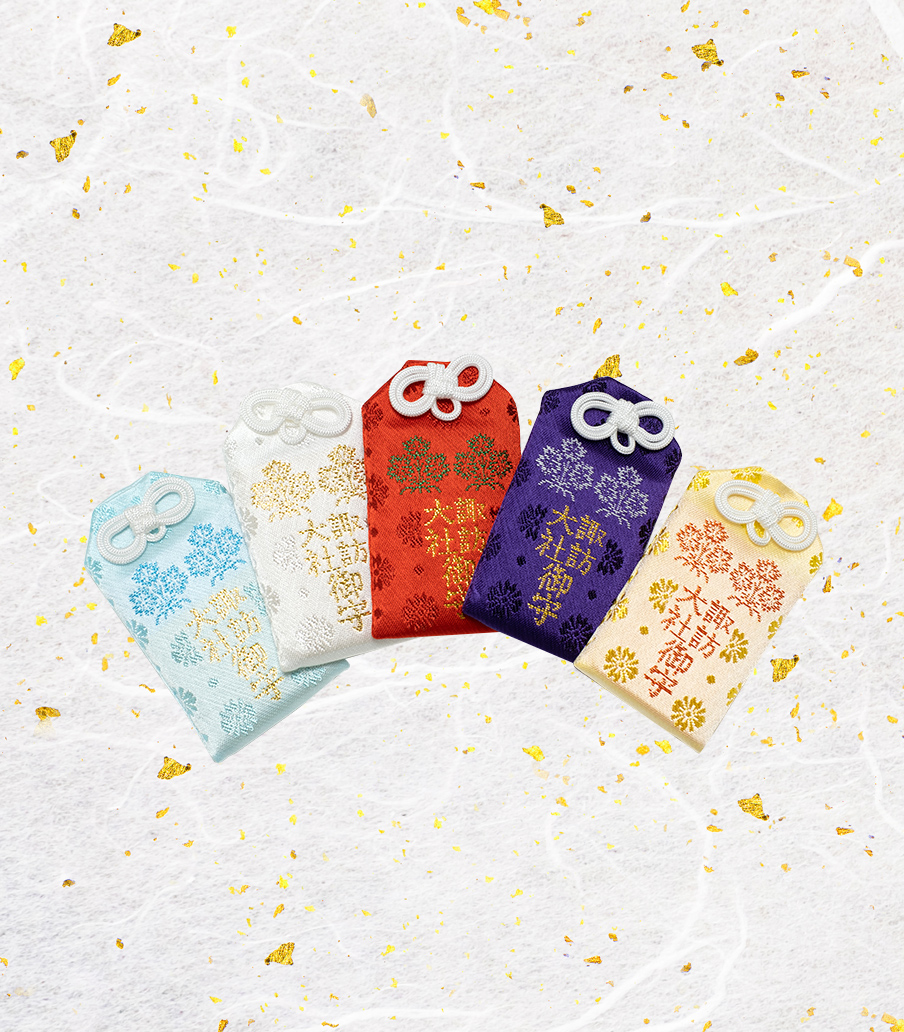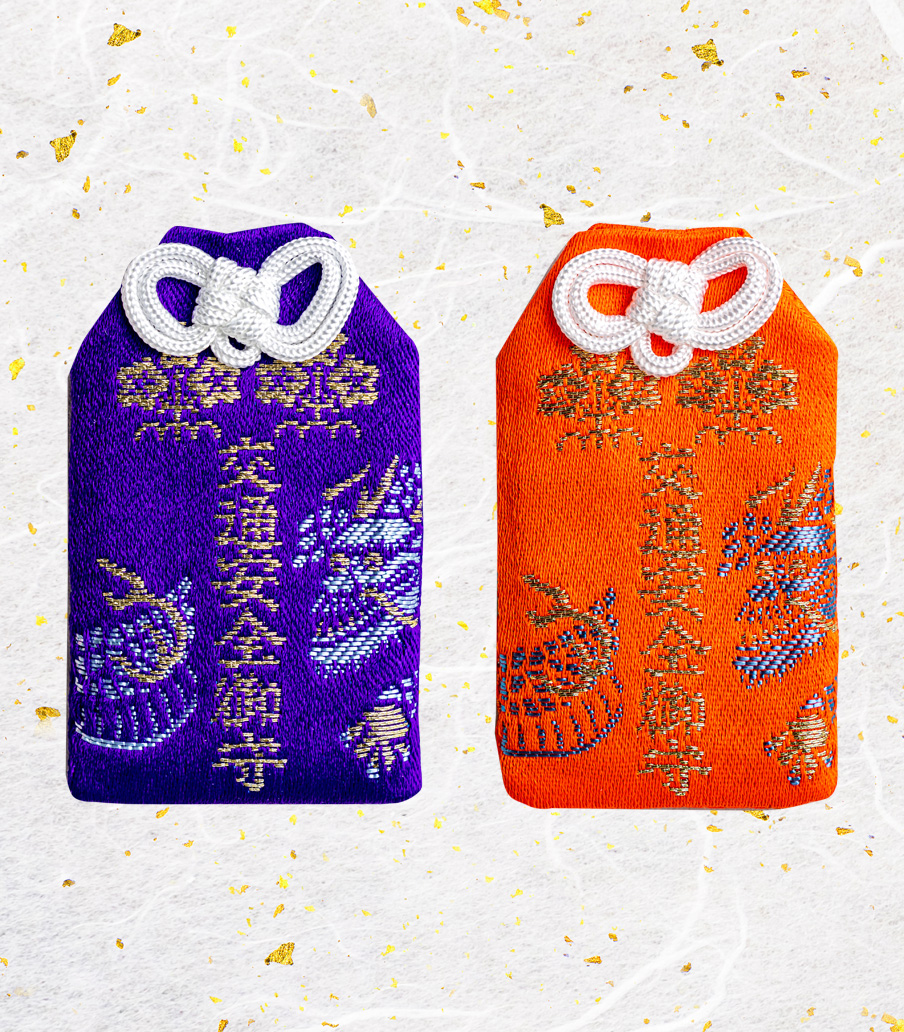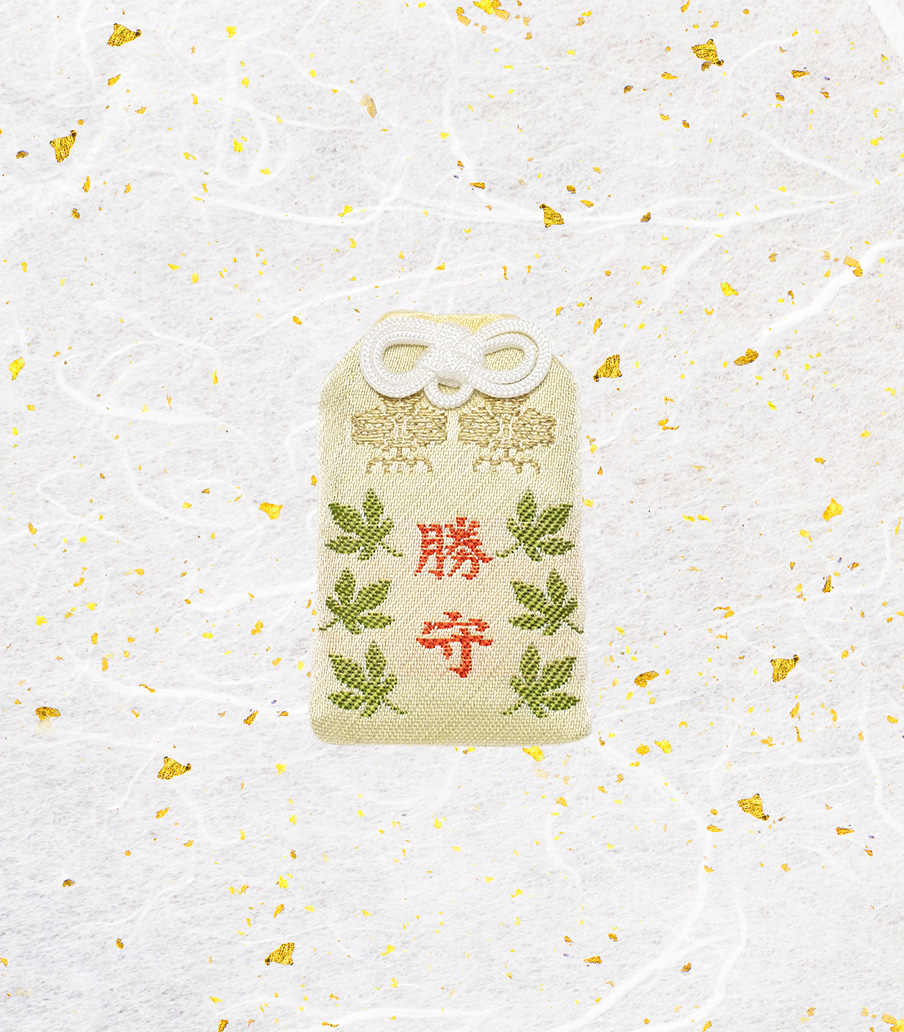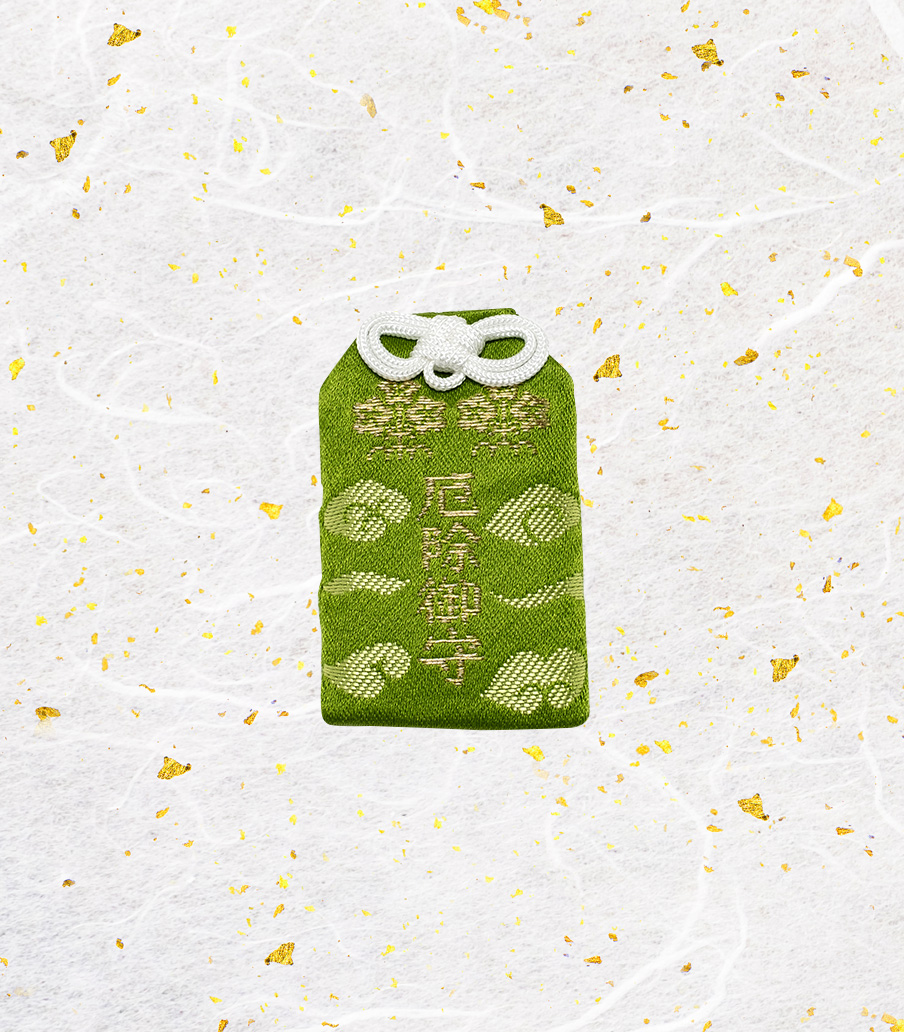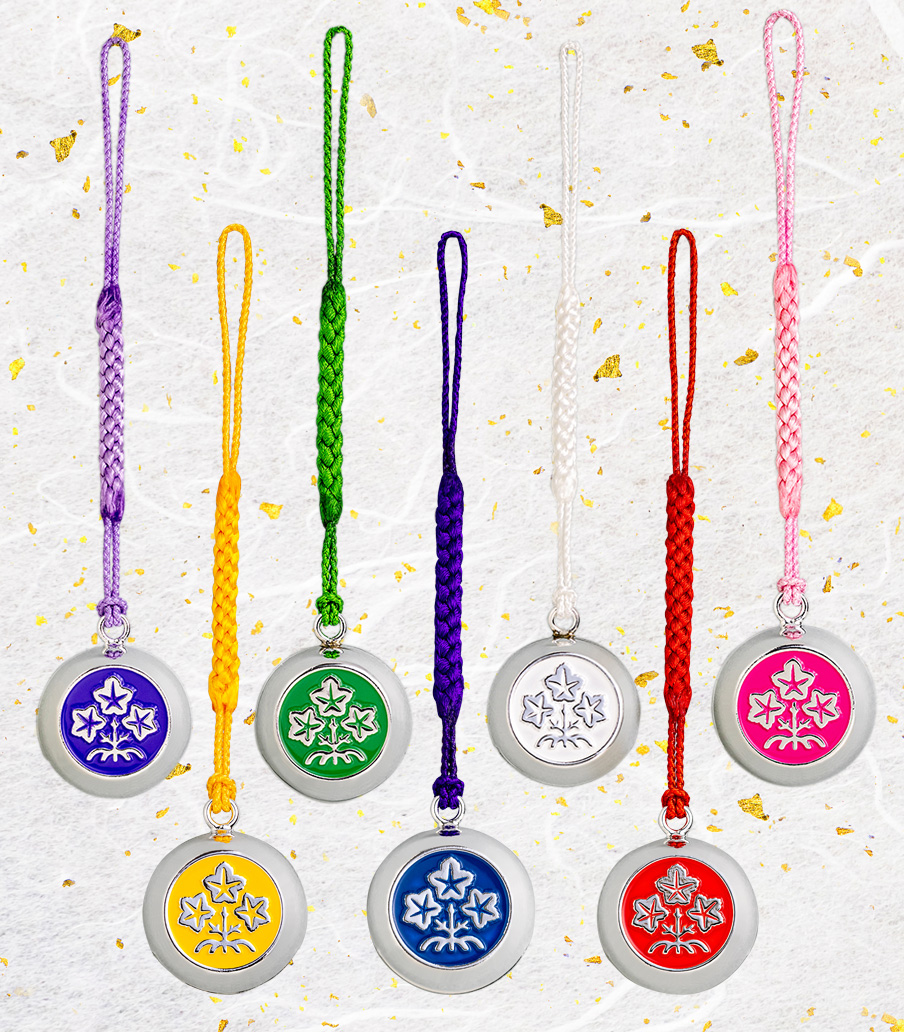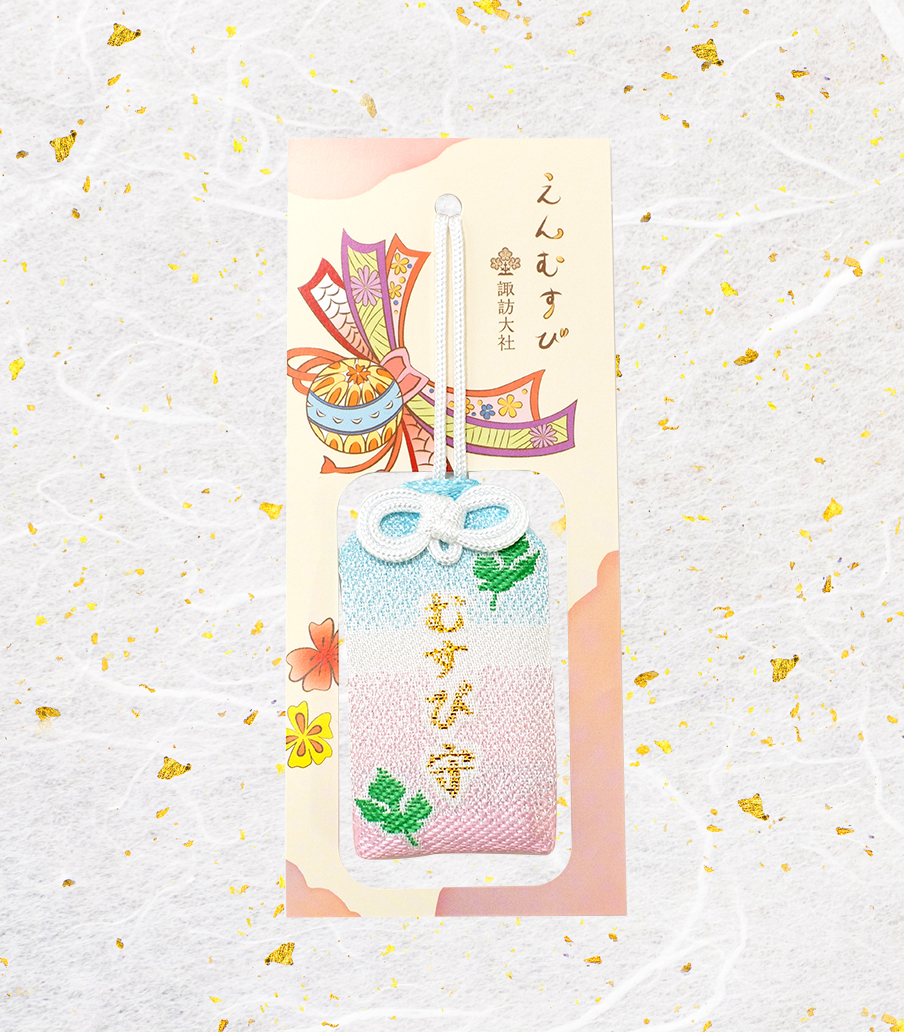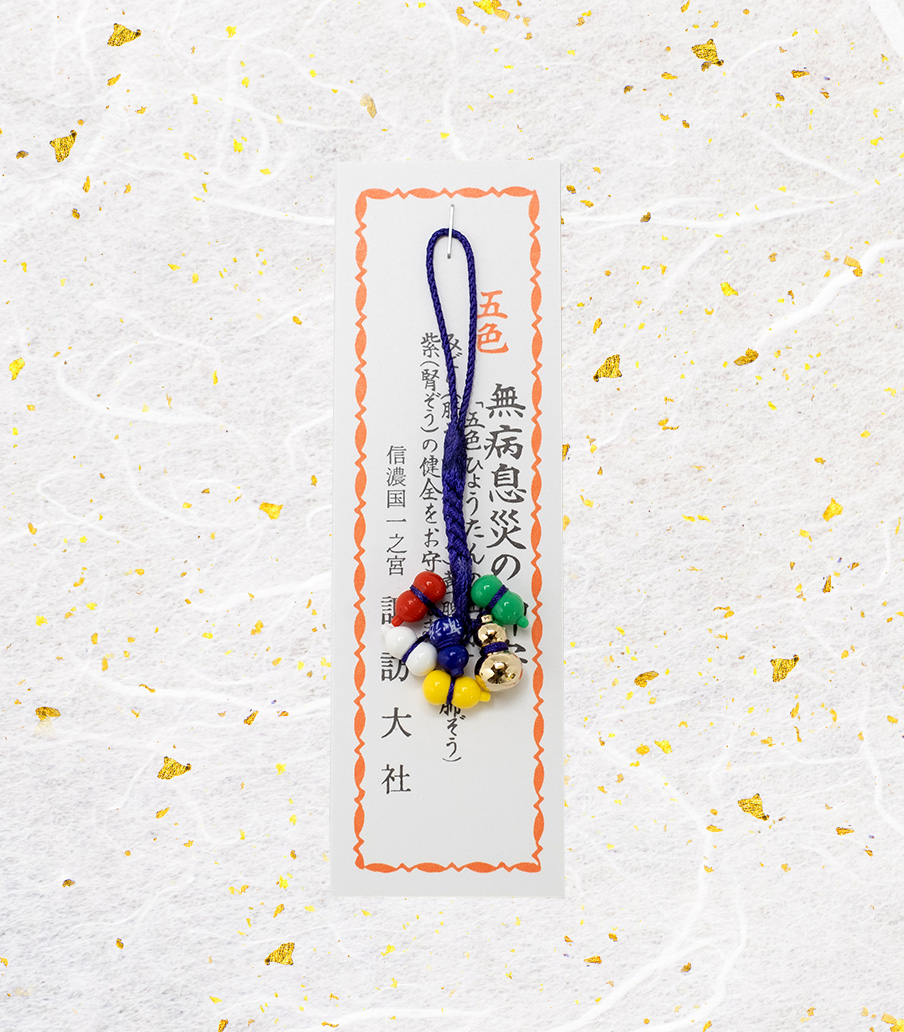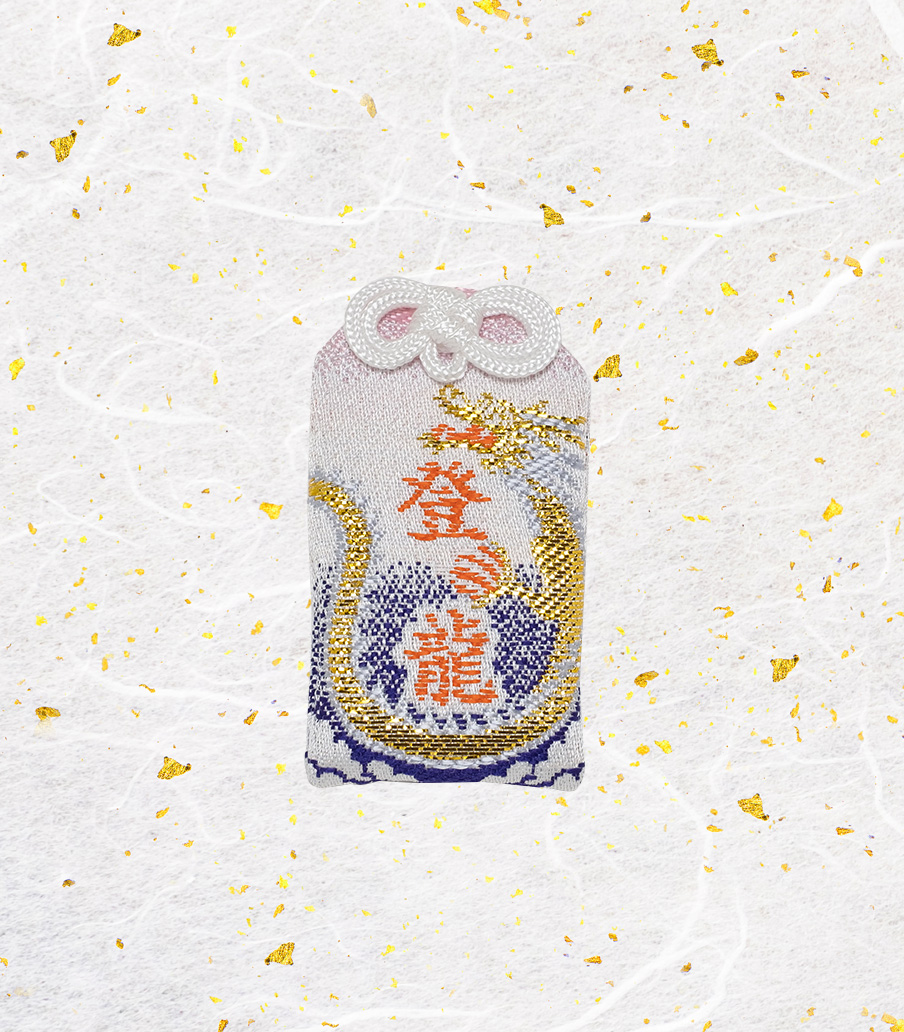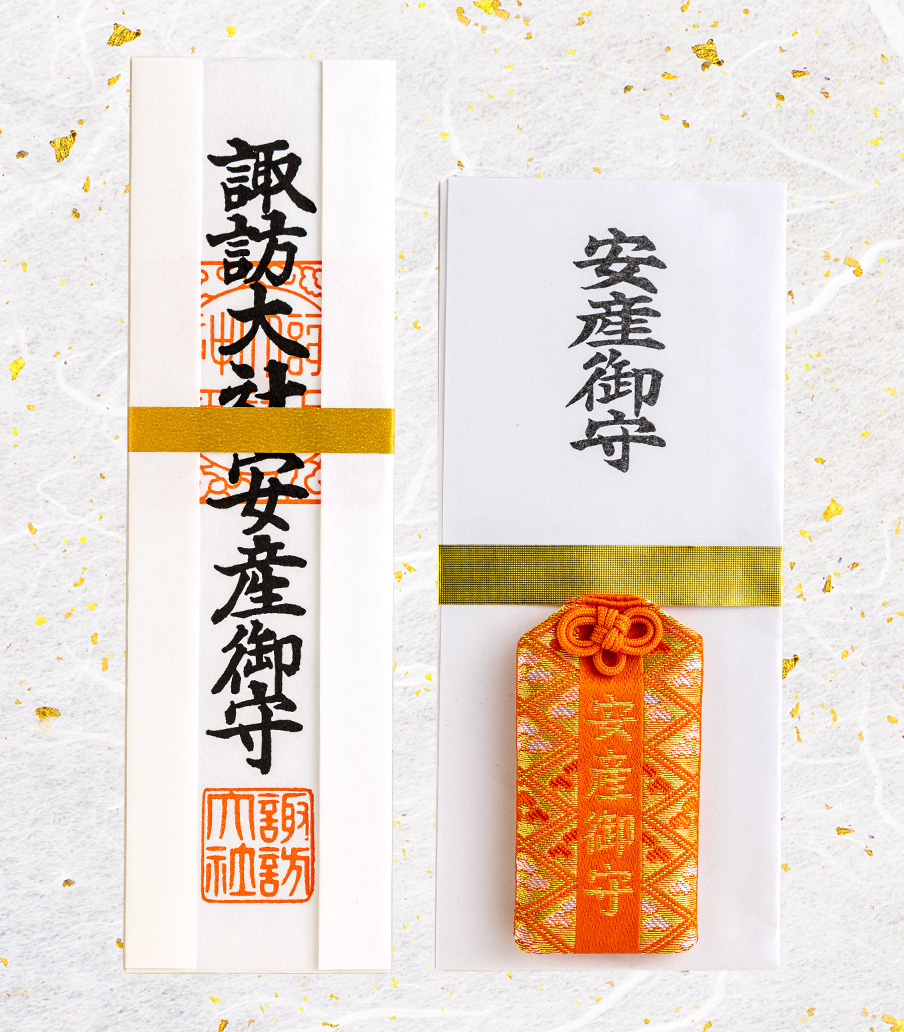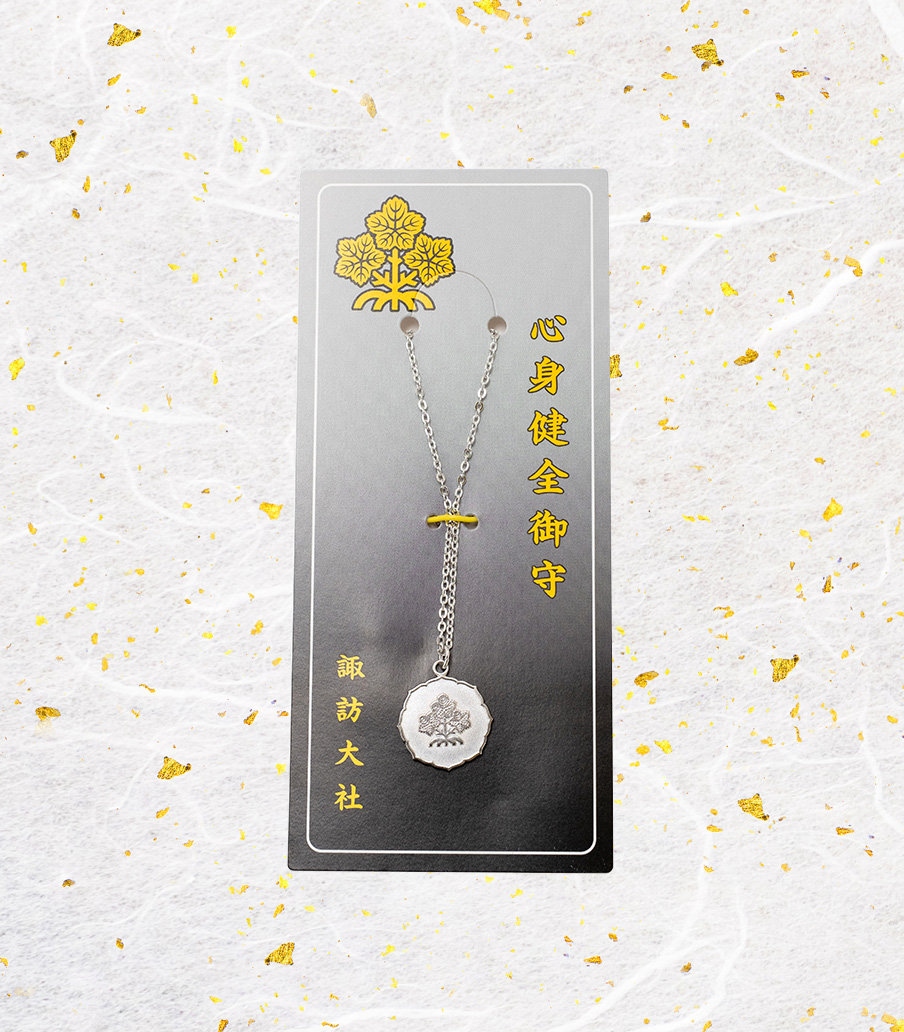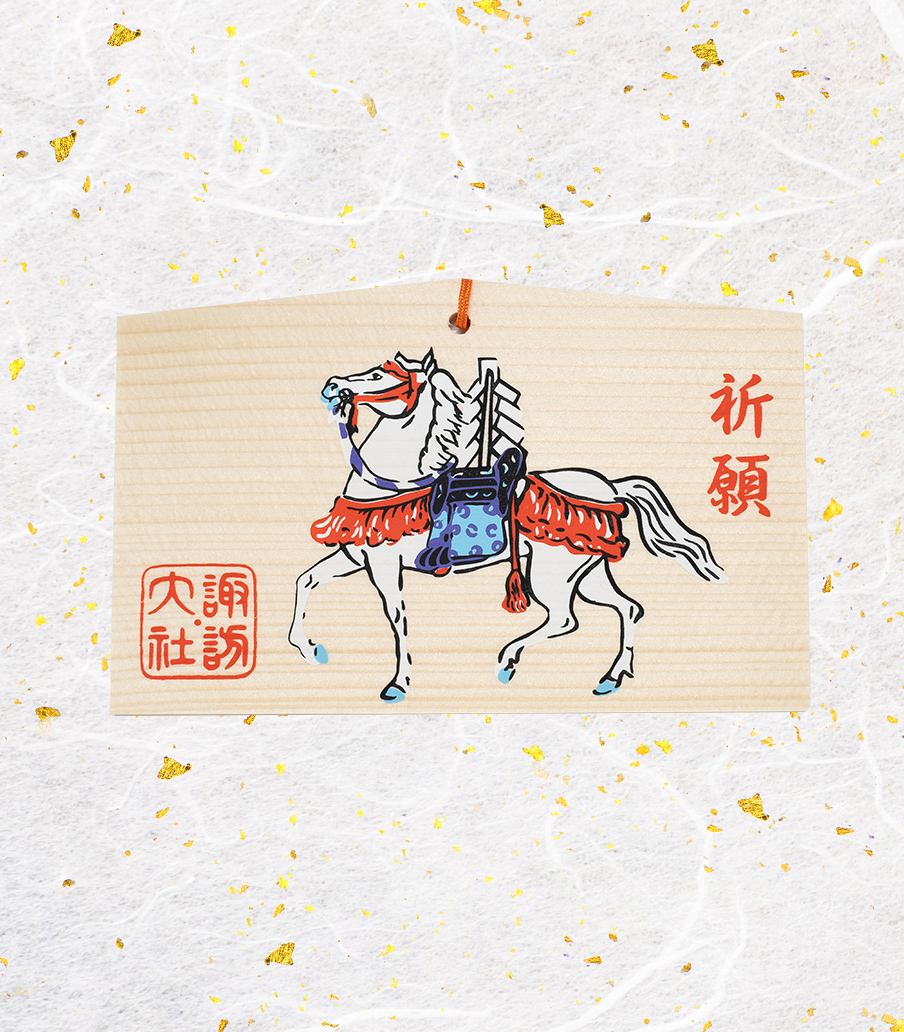Main ritual Events
In addition to the seven major rituals listed here, Suwa Taisha conducts over two hundred additional yearly rituals at its four main locations and related branch shrines.
Onbashira Festival
Shikinen-zoei-mihashira-taisai
Among Suwa Taisha's many rituals, this is the largest and most noteworthy. The festival involves rebuilding shrine buildings and replacing the four giant posts called Onbashira at each corner of shrine buildings. The origin of this festival can be traced. back to ancient time. At the beginning of the Heian period (764-1185), regional governor was in charge of carrying out the festival. At that time, marriages, coming of age ceremonies, and rebuilding or making additions to one's house were forbidden in order to insure that enough funds would be available to sponsor the rituals. Today, the festival is supported by 200,000 residents of the Suwa region.
-
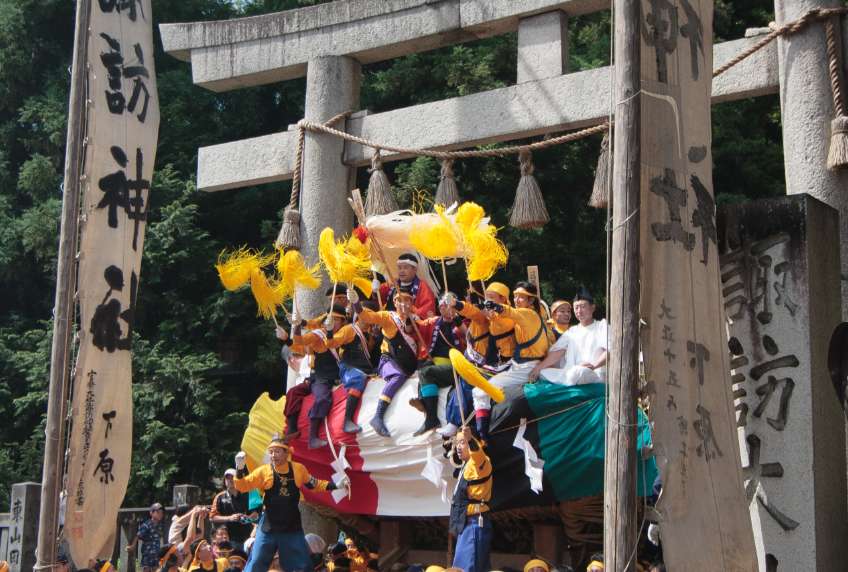
Annual Ritual and Ritual of Moving Deity
1,August
After the ritual of returning the divine symbol to Akimiya, the major annual ritual is conducted. As a procession of returning, parishioners from the region of the year tow a large boat made of raw firewood on which dolls of old man and woman are placed. After going around the Hall of Sacred Dance and Music three times, sumo is dedicated to the deity and the dolls are placed in fire.
Shimosha,
Harumiya
Shimosha,
Akimiya
-
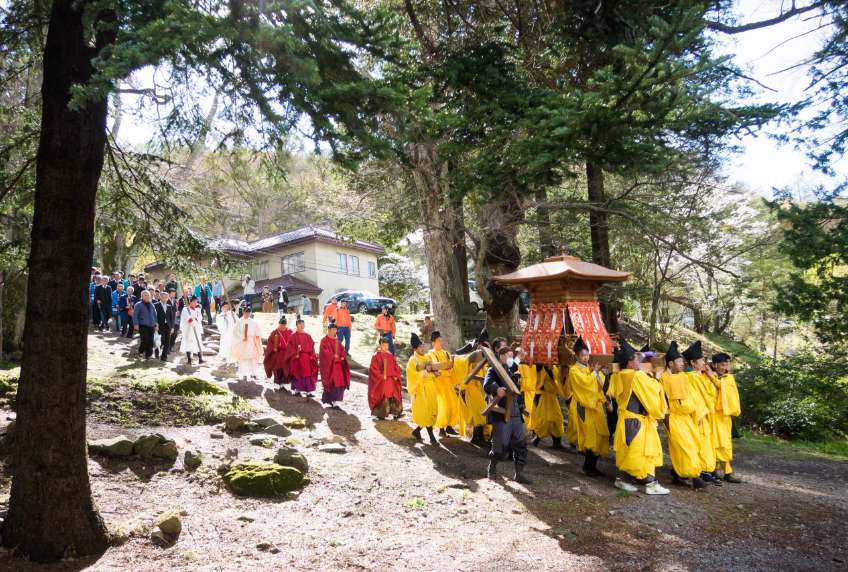
Annual Ritual and Ontosai
15,April
This is the primary ritual of Kamisha. This ritual was originally held on the day of the Cock in March. Therefore, it is also called the Ritual of the Cock. Following the Major Annual Ritual at the main sanctuary, representatives from the region of the year transport the enshrined deity in a portable shrine to Maemiya. There rituals are performed with offerings such as pillar-shaped staffs, dear heads, birds and fish.
Kamisha,
Maemiya
-
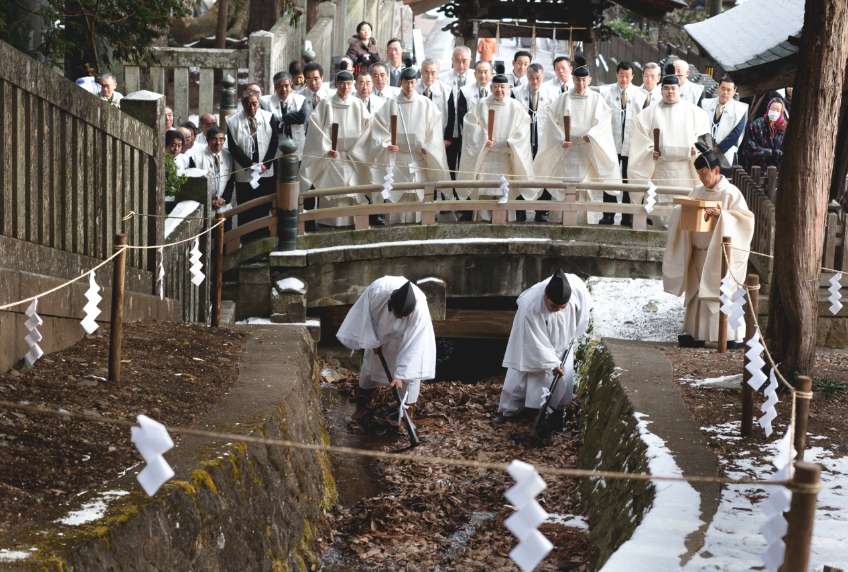
Kawazu-gari and
Onto-miura-shinji
1, January
The priests of the Kamisha dig through the ice on the Mitarai river that runs beside the Honmiya to capture frogs. These are taken before the deity, shot through using miniature bows and arrows, and then presented as offerings to the deity in order to pray for good harvest and peace of the nation. Following this, the head priest conducts a sacred divination rite to select the region of the year for the rituals in the forthcom-ing year.
Kamisha,
Honmiya
-
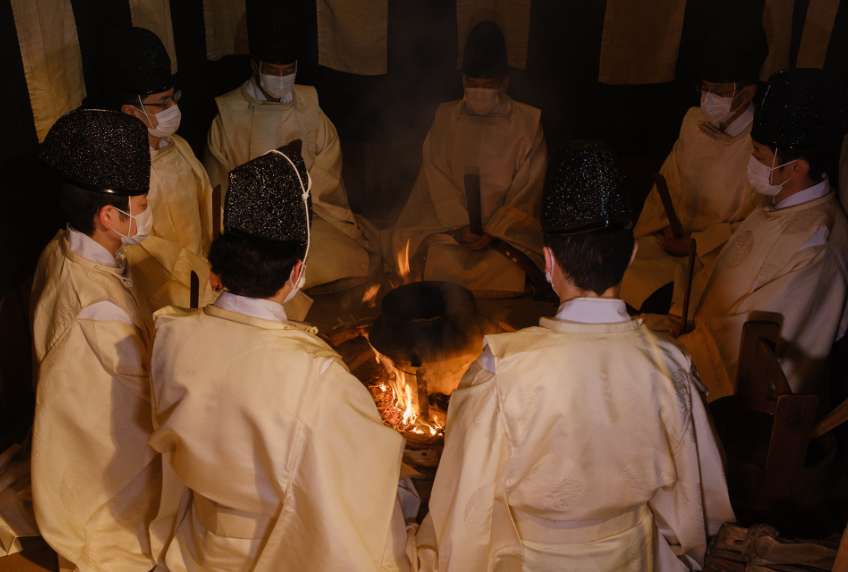
Tsutsu-gayu shinji
15, January
This is a ritual of telling fortune of the year. At Tsutsu-gayu-den of Harumiya, rice, adzuki beans and reed stalks are placed in a large pot and cooked overnight into a gruel. In the early morning of the 15th, the reed stalks are broken and the priests predict the bountifulness of the year's 43 kinds of crop harvests and the fortune of the society.
Shimosha,
Harumiya
-
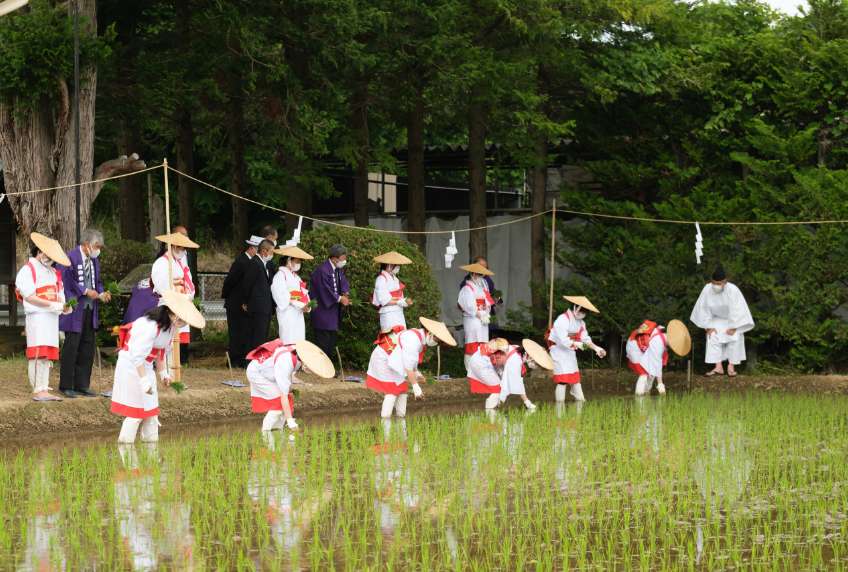
O-taue Shinji
30,June
At the Misakuda (“Sacred Field”) Shrine, a branch of the Shimosha, Gagaku (ritual music) is played before the god, and about 10 square-meters of sacred land is planted with rice. It is said that the rice planted here will be ready to eat in just one month (in time for the rituals on August 1st), and the rapid growth of the rice plants in the sacred field is one of Suwa’s Seven Unusual Aspects. A record from the Muromachi period (1333-1573) mentions that this ritual was also held at the Kamisha on the same day, but today the Kamisha’s field planting ritual is held in the beginning of June.
Kamisha,
Maemiya
Kamisha,
Honmiya
-
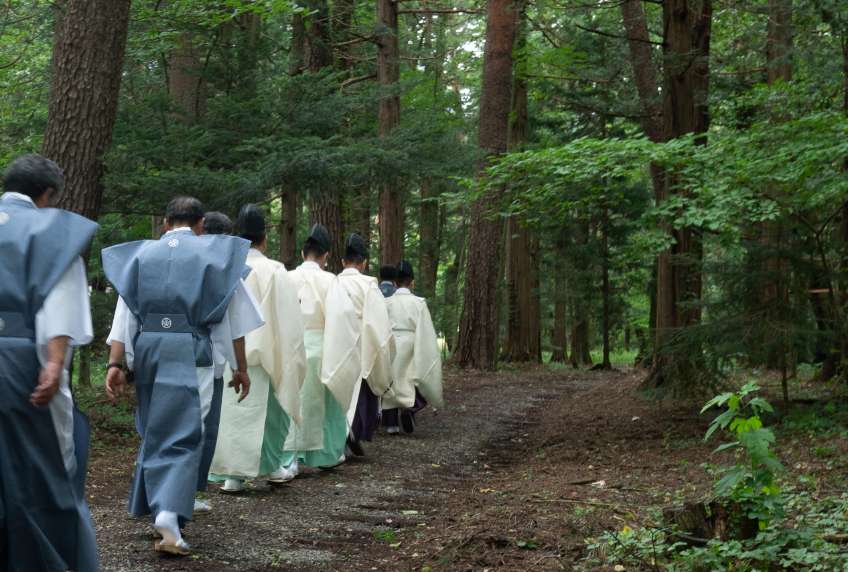
Misayamasha-sai
26-28,August
Misayamasha-sai (Misayama Festival) (Kamisha and Shimosha) August 26-28 This ritual is held at Misayama-sha of both Kamisha and Shimosha. Since the shrine priests stay in small huts made of straw, this festival is also called the Straw Hut Festival (Hoya matsuri). During the Kamakura period (1185-1333), the shogunate government made its warriors from across the nation participate in the festival and held competition for their skill of military arts. Participating warriors returned their assigned places of work with the spirit of shrine and established branch shrines. Today, additional rites to pray for bountiful crops and to pray for the health of two-year-old children are also held.
Kamisha,
Honmiya
Shimosha,
Akimiya
-
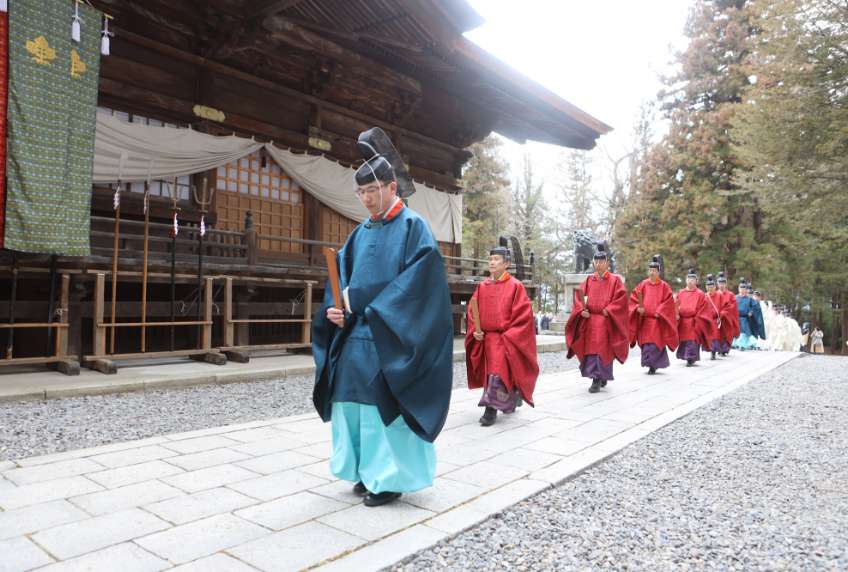
Ritual of Moving Deity
In advance to cultivating in spring, the enshrined deity is moved from Akimiya to Harumiya.
Shimosha,
Harumiya
Shimosha,
Akimiya
Seven Unusual Aspects
- The God's crossing of the frozen lake (Omiwatari)
In the coldest winters, when the ice on the frozen Lake Suwa cracks in a phenomenon called Omiwatari, “the God’s Crossing,” it is said that Takeminakata has traveled across the lake to visit his wife Yasakatome at the Shimosha.
- The Frog Hunt on the first day of the year
- The Tsutsu-gayu predictions
- The Split-ear Deer of Koya
- The rapid growth of rice in the Misakuda field
- The pond at the Kuzui Jinja
According to the shrine’s legends, when ritual implements and other items were once thrown into the pond at the Kuzui Jinja (one of Suwa’s branch shrines), the items later appeared in another lake in Shizuoka Prefecture.
- Water from the eaves of the East and West Sanctuaries
 Annual Ritual and Ritual of Moving Deity1,AugustAfter the ritual of returning the divine symbol to Akimiya, the major annual ritual is conducted. As a procession of returning, parishioners from the region of the year tow a large boat made of raw firewood on which dolls of old man and woman are placed. After going around the Hall of Sacred Dance and Music three times, sumo is dedicated to the deity and the dolls are placed in fire.Shimosha,
Annual Ritual and Ritual of Moving Deity1,AugustAfter the ritual of returning the divine symbol to Akimiya, the major annual ritual is conducted. As a procession of returning, parishioners from the region of the year tow a large boat made of raw firewood on which dolls of old man and woman are placed. After going around the Hall of Sacred Dance and Music three times, sumo is dedicated to the deity and the dolls are placed in fire.Shimosha, Annual Ritual and Ontosai15,AprilThis is the primary ritual of Kamisha. This ritual was originally held on the day of the Cock in March. Therefore, it is also called the Ritual of the Cock. Following the Major Annual Ritual at the main sanctuary, representatives from the region of the year transport the enshrined deity in a portable shrine to Maemiya. There rituals are performed with offerings such as pillar-shaped staffs, dear heads, birds and fish.Kamisha,
Annual Ritual and Ontosai15,AprilThis is the primary ritual of Kamisha. This ritual was originally held on the day of the Cock in March. Therefore, it is also called the Ritual of the Cock. Following the Major Annual Ritual at the main sanctuary, representatives from the region of the year transport the enshrined deity in a portable shrine to Maemiya. There rituals are performed with offerings such as pillar-shaped staffs, dear heads, birds and fish.Kamisha, Kawazu-gari and
Kawazu-gari and Tsutsu-gayu shinji15, JanuaryThis is a ritual of telling fortune of the year. At Tsutsu-gayu-den of Harumiya, rice, adzuki beans and reed stalks are placed in a large pot and cooked overnight into a gruel. In the early morning of the 15th, the reed stalks are broken and the priests predict the bountifulness of the year's 43 kinds of crop harvests and the fortune of the society.Shimosha,
Tsutsu-gayu shinji15, JanuaryThis is a ritual of telling fortune of the year. At Tsutsu-gayu-den of Harumiya, rice, adzuki beans and reed stalks are placed in a large pot and cooked overnight into a gruel. In the early morning of the 15th, the reed stalks are broken and the priests predict the bountifulness of the year's 43 kinds of crop harvests and the fortune of the society.Shimosha, O-taue Shinji30,JuneAt the Misakuda (“Sacred Field”) Shrine, a branch of the Shimosha, Gagaku (ritual music) is played before the god, and about 10 square-meters of sacred land is planted with rice. It is said that the rice planted here will be ready to eat in just one month (in time for the rituals on August 1st), and the rapid growth of the rice plants in the sacred field is one of Suwa’s Seven Unusual Aspects. A record from the Muromachi period (1333-1573) mentions that this ritual was also held at the Kamisha on the same day, but today the Kamisha’s field planting ritual is held in the beginning of June.Kamisha,
O-taue Shinji30,JuneAt the Misakuda (“Sacred Field”) Shrine, a branch of the Shimosha, Gagaku (ritual music) is played before the god, and about 10 square-meters of sacred land is planted with rice. It is said that the rice planted here will be ready to eat in just one month (in time for the rituals on August 1st), and the rapid growth of the rice plants in the sacred field is one of Suwa’s Seven Unusual Aspects. A record from the Muromachi period (1333-1573) mentions that this ritual was also held at the Kamisha on the same day, but today the Kamisha’s field planting ritual is held in the beginning of June.Kamisha, Misayamasha-sai26-28,AugustMisayamasha-sai (Misayama Festival) (Kamisha and Shimosha) August 26-28 This ritual is held at Misayama-sha of both Kamisha and Shimosha. Since the shrine priests stay in small huts made of straw, this festival is also called the Straw Hut Festival (Hoya matsuri). During the Kamakura period (1185-1333), the shogunate government made its warriors from across the nation participate in the festival and held competition for their skill of military arts. Participating warriors returned their assigned places of work with the spirit of shrine and established branch shrines. Today, additional rites to pray for bountiful crops and to pray for the health of two-year-old children are also held.Kamisha,
Misayamasha-sai26-28,AugustMisayamasha-sai (Misayama Festival) (Kamisha and Shimosha) August 26-28 This ritual is held at Misayama-sha of both Kamisha and Shimosha. Since the shrine priests stay in small huts made of straw, this festival is also called the Straw Hut Festival (Hoya matsuri). During the Kamakura period (1185-1333), the shogunate government made its warriors from across the nation participate in the festival and held competition for their skill of military arts. Participating warriors returned their assigned places of work with the spirit of shrine and established branch shrines. Today, additional rites to pray for bountiful crops and to pray for the health of two-year-old children are also held.Kamisha, Ritual of Moving DeityIn advance to cultivating in spring, the enshrined deity is moved from Akimiya to Harumiya.Shimosha,
Ritual of Moving DeityIn advance to cultivating in spring, the enshrined deity is moved from Akimiya to Harumiya.Shimosha,



